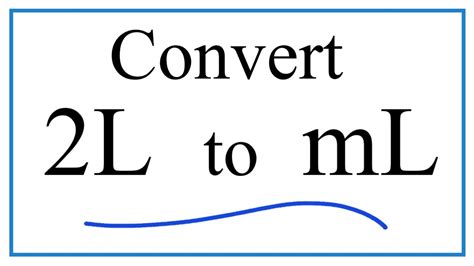5000 Milliliters Is How Many Liters
Kalali
Mar 29, 2025 · 4 min read

Table of Contents
5000 Milliliters is How Many Liters: A Comprehensive Guide to Metric Conversions
Understanding metric conversions is crucial in various fields, from cooking and baking to scientific research and engineering. One common conversion involves milliliters (mL) and liters (L), units used to measure volume. This comprehensive guide will delve deep into the conversion of 5000 milliliters to liters, explaining the process, providing practical examples, and exploring related conversions to solidify your understanding of the metric system.
Understanding the Metric System
The metric system, also known as the International System of Units (SI), is a decimal system based on multiples of 10. This makes conversions relatively straightforward compared to imperial units. The fundamental unit of volume in the metric system is the liter (L). Smaller volumes are often expressed in milliliters (mL).
The Key Conversion Factor
The core relationship between milliliters and liters is:
1 liter (L) = 1000 milliliters (mL)
This means that one liter is equivalent to one thousand milliliters. This simple equation is the cornerstone of all milliliter-to-liter conversions.
Converting 5000 Milliliters to Liters
To convert 5000 milliliters to liters, we use the conversion factor mentioned above. We can set up a simple proportion:
1 L / 1000 mL = x L / 5000 mL
Solving for 'x', we cross-multiply:
1000 mL * x L = 1 L * 5000 mL
x L = (1 L * 5000 mL) / 1000 mL
x L = 5 L
Therefore, 5000 milliliters is equal to 5 liters.
Practical Applications and Examples
Understanding this conversion is vital in numerous everyday situations and professional settings. Here are a few examples:
-
Cooking and Baking: Recipes often list ingredients in milliliters, especially liquid ingredients like milk, oil, or water. Knowing how to convert to liters allows for easy scaling of recipes up or down. If a recipe calls for 2500 mL of water, you'd need 2.5 liters.
-
Medicine: Dosage of liquid medication is frequently expressed in milliliters. Healthcare professionals might need to convert dosages to liters for specific calculations or record-keeping. For instance, administering 1000 mL of intravenous fluids is equivalent to administering 1 liter.
-
Science and Research: In scientific experiments, precise volume measurements are critical. Converting between milliliters and liters ensures accuracy in calculations and reporting experimental results. A chemistry experiment requiring 7500 mL of a solution would use 7.5 liters.
-
Engineering: In engineering projects, volume calculations are frequently necessary, particularly in fluid dynamics and hydraulics. Converting between milliliters and liters facilitates efficient calculation and design. For instance, calculating the capacity of a water tank might involve converting measurements from milliliters to liters for ease of understanding.
Beyond the Basic Conversion: Exploring Related Conversions
While converting 5000 milliliters to liters is straightforward, understanding related conversions can further enhance your knowledge of the metric system. Here are a few examples:
-
Converting Liters to Milliliters: To convert liters to milliliters, simply multiply the number of liters by 1000. For example, 3 liters is equal to 3 * 1000 = 3000 milliliters.
-
Converting Cubic Centimeters (cm³) to Milliliters: One cubic centimeter is exactly equal to one milliliter. This equivalence is often used interchangeably in various contexts. Therefore, 10 cm³ is equivalent to 10 mL.
-
Converting Cubic Meters (m³) to Liters: One cubic meter is equal to 1000 liters. This is a crucial conversion for large-volume measurements. A swimming pool might have a volume measured in cubic meters, which can be easily converted to liters for easier comprehension of the water volume.
-
Working with other metric prefixes: The metric system utilizes prefixes to indicate multiples or fractions of the base unit. Understanding prefixes like kilo (k), deci (d), centi (c), and milli (m) extends your ability to perform various conversions within the metric system.
Tips and Tricks for Accurate Metric Conversions
-
Understand the prefixes: Familiarize yourself with the common metric prefixes and their corresponding numerical values.
-
Use a conversion chart: A conversion chart can be a useful tool for quick reference, especially when dealing with multiple units.
-
Check your work: Always double-check your calculations to avoid errors.
-
Use online converters: Many online conversion tools are available to verify your manual calculations and save time. (While I won't link to specific websites, many free and reliable converters exist online).
-
Practice regularly: The more you practice metric conversions, the easier they will become.
Conclusion
Converting 5000 milliliters to liters demonstrates the straightforward nature of metric conversions. Understanding the fundamental relationship between milliliters and liters, along with the broader context of the metric system, is invaluable for everyday life, professional endeavors, and scientific pursuits. By mastering these conversions and expanding your knowledge of related units, you'll significantly enhance your quantitative skills and comprehension of the world around you. Remember to practice regularly and utilize available resources to solidify your understanding. With consistent effort, you'll become proficient in performing these essential conversions with ease and accuracy. The key is to remember the fundamental conversion factor: 1 liter = 1000 milliliters. From there, all other conversions become much more manageable.
Latest Posts
Latest Posts
-
How Many Oz Is One Liter Of Water
Mar 31, 2025
-
Cuanto Es El 25 De 100
Mar 31, 2025
-
How Long Is 120cm In Inches
Mar 31, 2025
-
Is Frying Eggs A Chemical Change
Mar 31, 2025
-
How Many Feet Is 130 Cm
Mar 31, 2025
Related Post
Thank you for visiting our website which covers about 5000 Milliliters Is How Many Liters . We hope the information provided has been useful to you. Feel free to contact us if you have any questions or need further assistance. See you next time and don't miss to bookmark.
